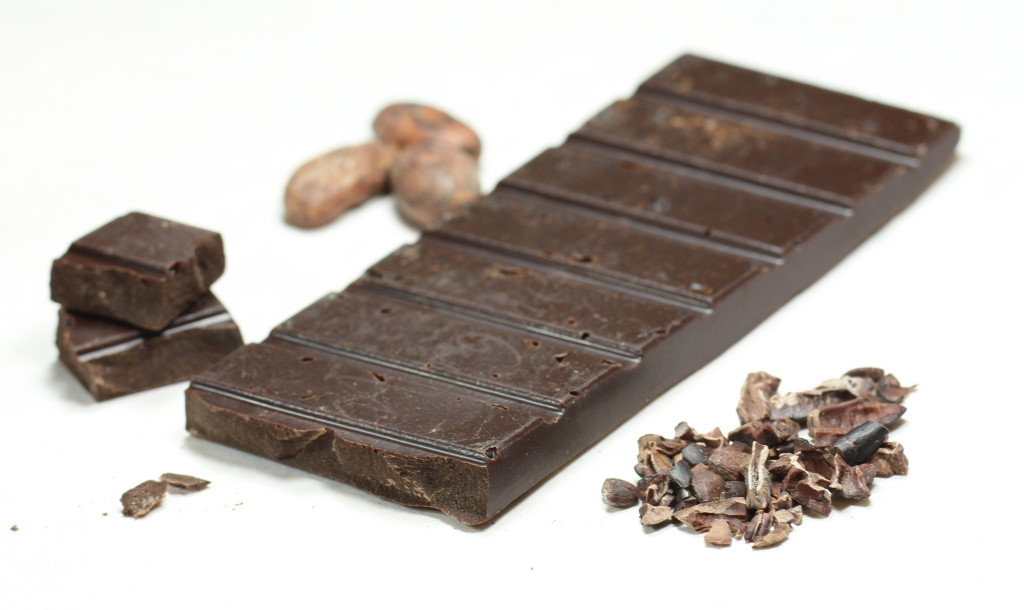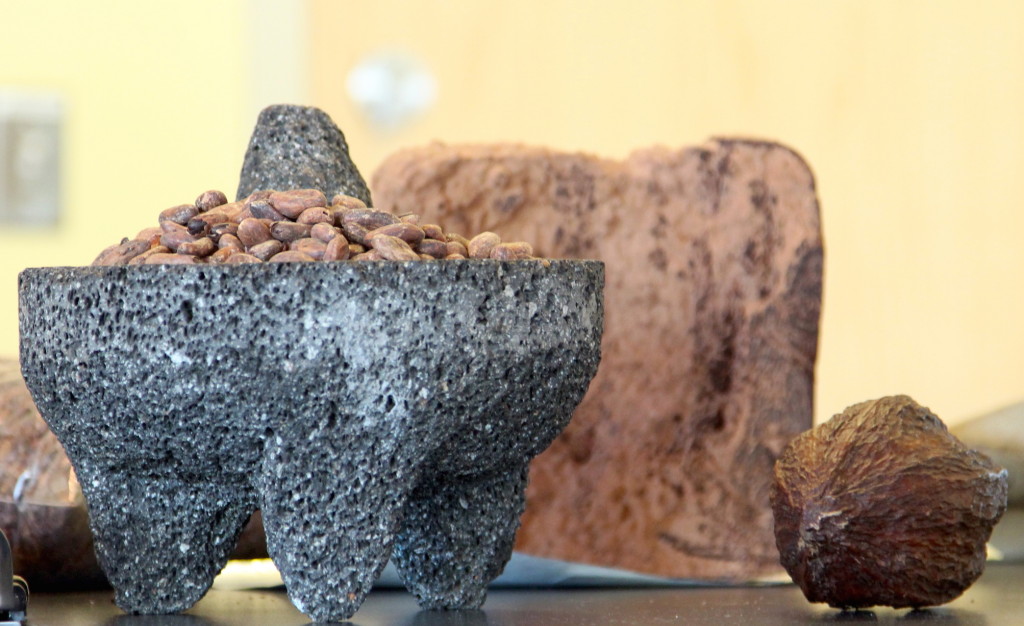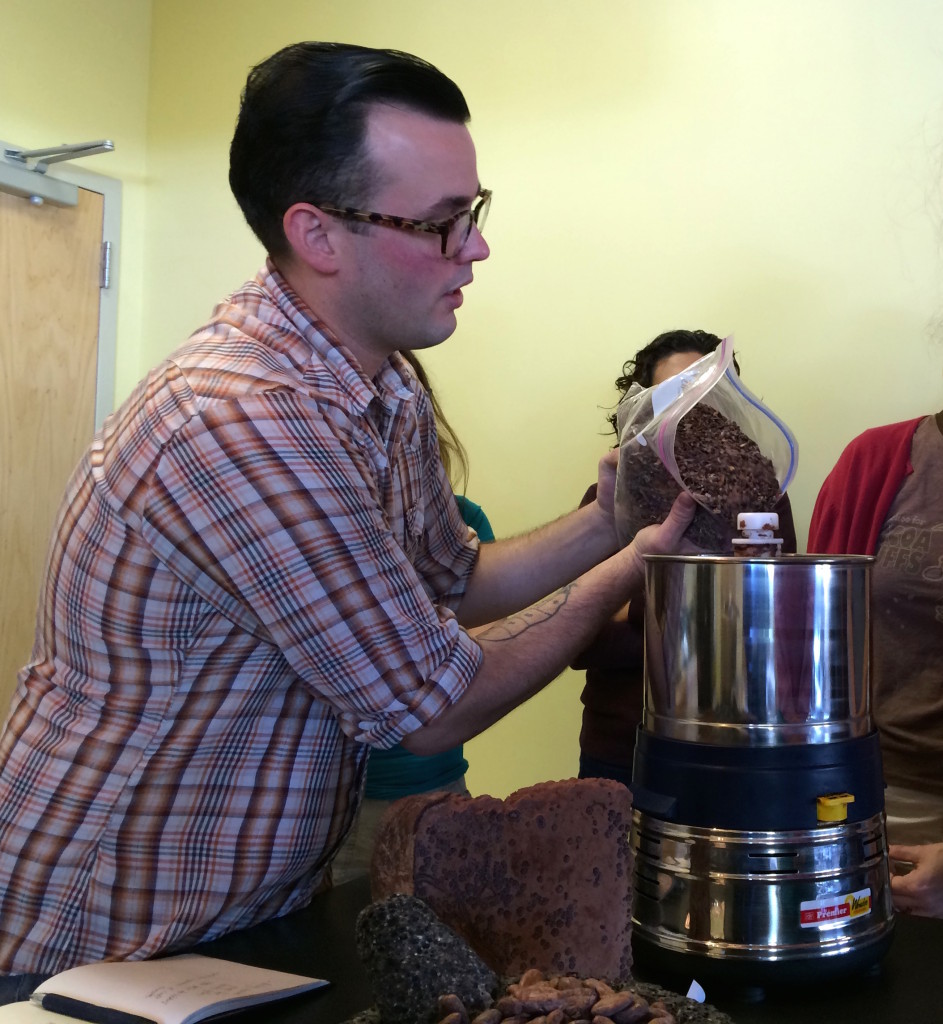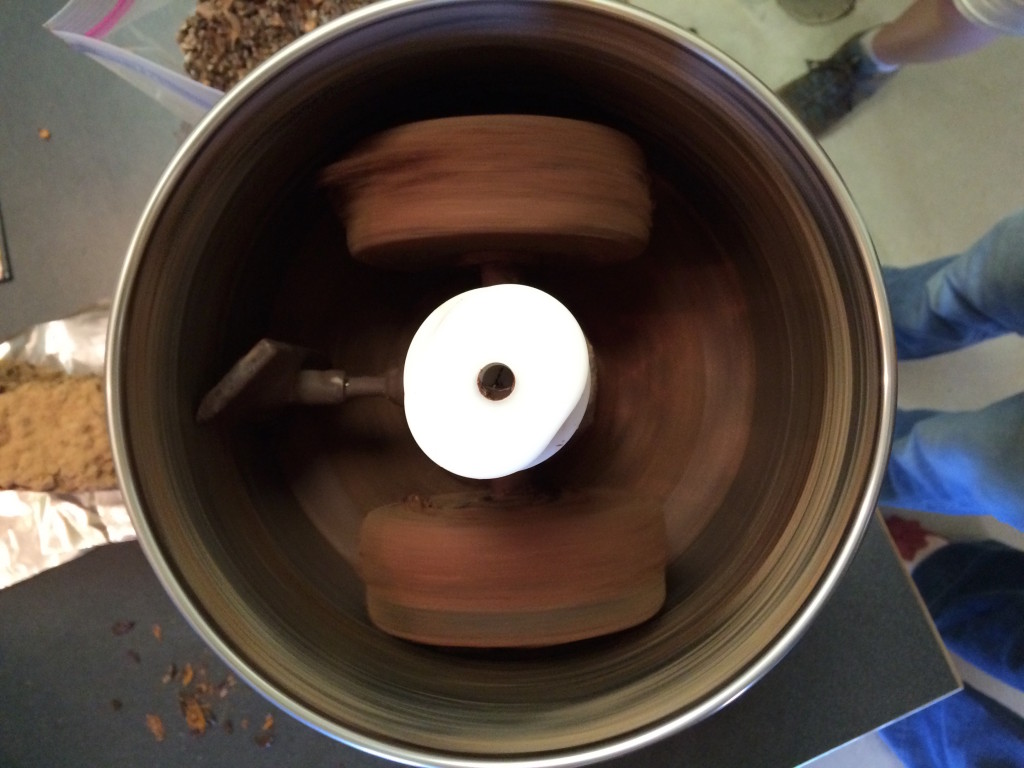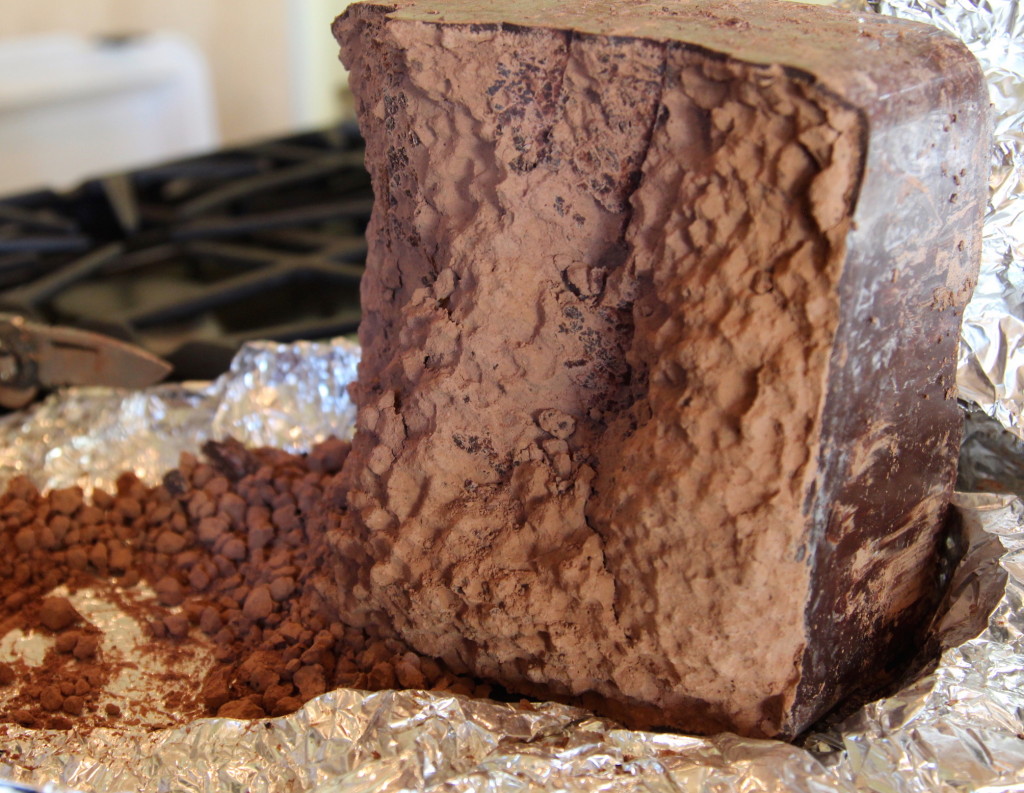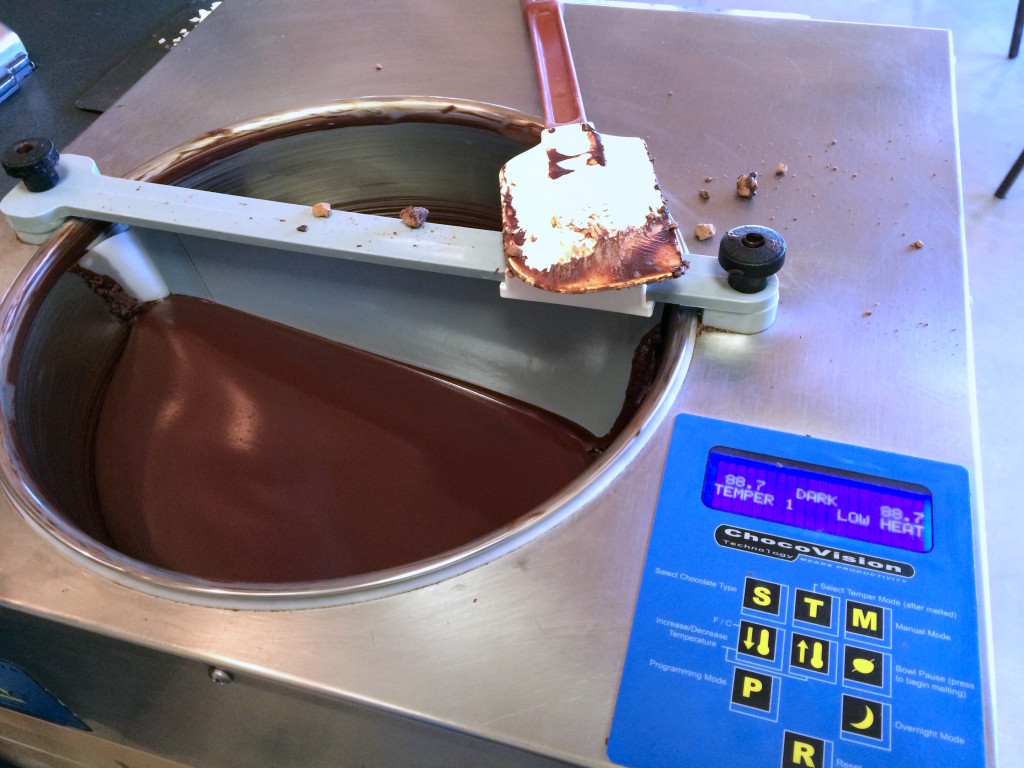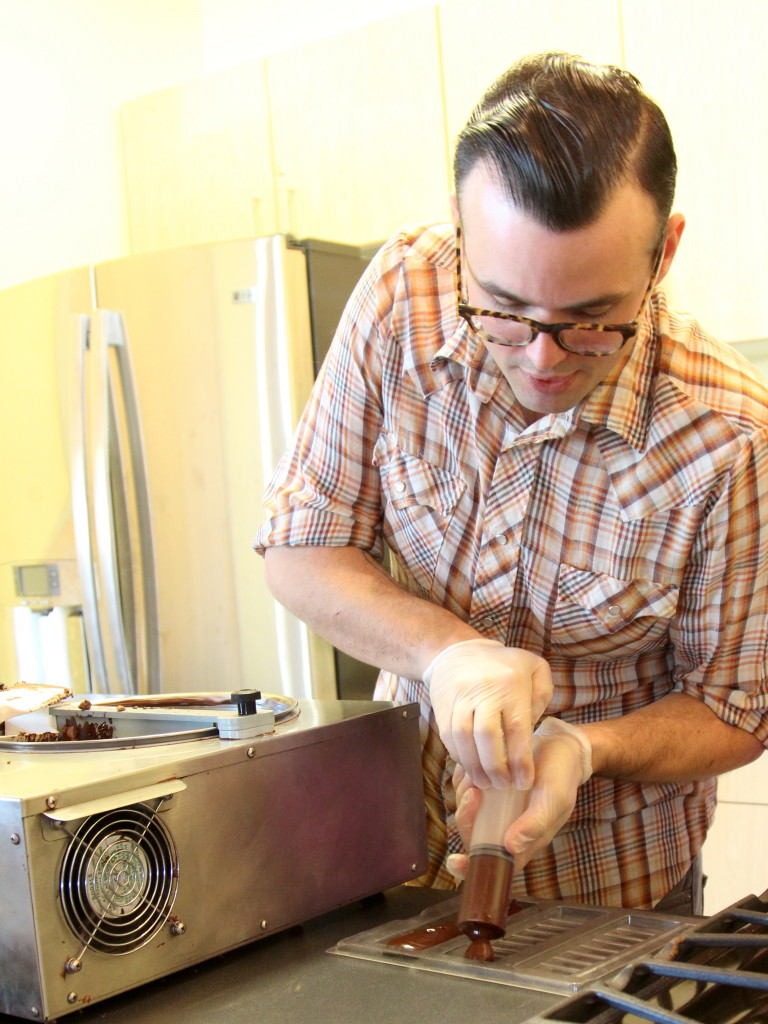A few months ago, I discovered that Wheatsville Coop in South Austin had started offering food workshops. One of the first was a workshop on how to make chocolate, presented by Bob Williamson of SRSLY Chocolate.
Bob started making candy while living in Florida. He started making chocolate to accompany some caramel he was making, but he fell in love with making chocolate and dropped the caramel. Bob continued his love affair with chocolate when he and his wife moved to Austin last year.
Bob described the first half of the process – how and where the cacao trees grow, the fermentation process, and roasting. He then demonstrated the remaining processes – grinding, adding sugar (if wanted), tempering, and making the bars.
The cacao tree is a tropical tree that grows in areas around the equator in conditions similar to those of coffee plantations. He buys his chocolate from a farmer coop of 10,000 small farmers in the Dominican Republic.
The trees bloom all year long. Inside the seed pods is a white, sweet, and delicious pulp as well as the seeds. The farmers gather the pods, cut them in half, and scoop out the pulp and the beans. They then mix the seeds and the pulp together and allow them to ferment.
After fermentation, the seeds are dried in the sun or over wood fires, packaged, and shipped to manufacturers.
The chocolate-maker sorts through the beans, cleans them, and roasts them. The roasting teases out more chocolate flavor. The roasted beans are then crushed to release the cocoa nibs, which are rich in nutrients and cocoa butter. The nibs are winnowed to remove the paper-thin seed husks.
The nibs are then ground. The friction from the grinder heats the cocoa butter and turns the nibs into chocolate liquor, which when poured out and left to harden, becomes an untempered chocolate.
Untempered chocolate forms a lattice structure that is very crumbly. To temper chocolate, you bring it up to a certain temperature so that it can reform into smaller, smoother chocolate. If you’ve ever seen chocolate chips or a chocolate bar with a powdery coating, it just means that the chocolate fell out of temper. It should still be good to eat.
Once the chocolate has been tempered, you can pour the chocolate into molds. After the chocolate has cooled, unmold the chocolate and eat it.
The workshop was a lot of fun. Bob’s passion about chocolate was clearly apparent. Best of all, each participant got to make two bars of chocolate of their own design to take home.
Wheatsville is sponsoring another How to Make Chocolate Workshop on Feb. 7, 2015. The cost is $35, and it’s well worth the money if you’re into chocolate. (Hurry! Last I checked there were only a few seats left!)
The coop offers other workshops throughout the year. You can keep up with all Wheatsville events on their event calendar.

